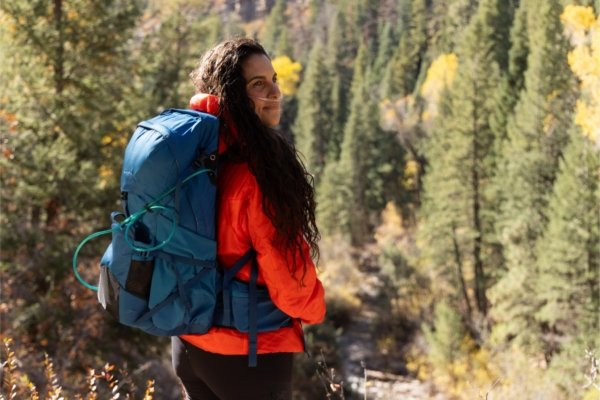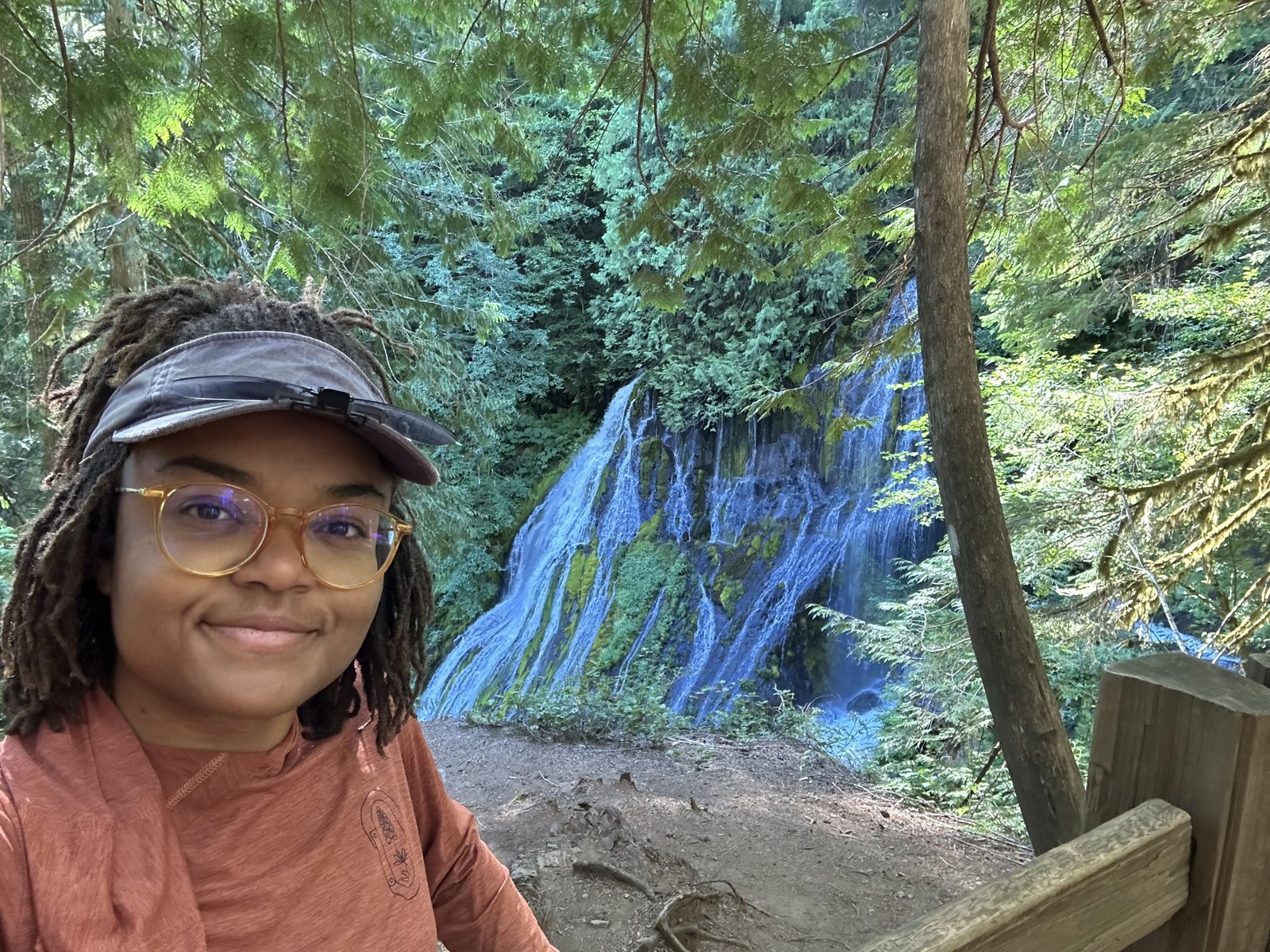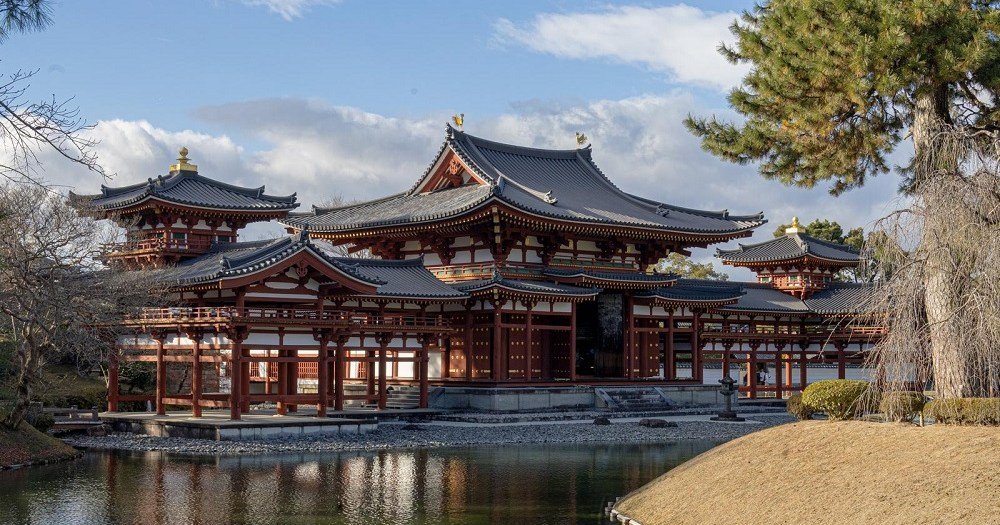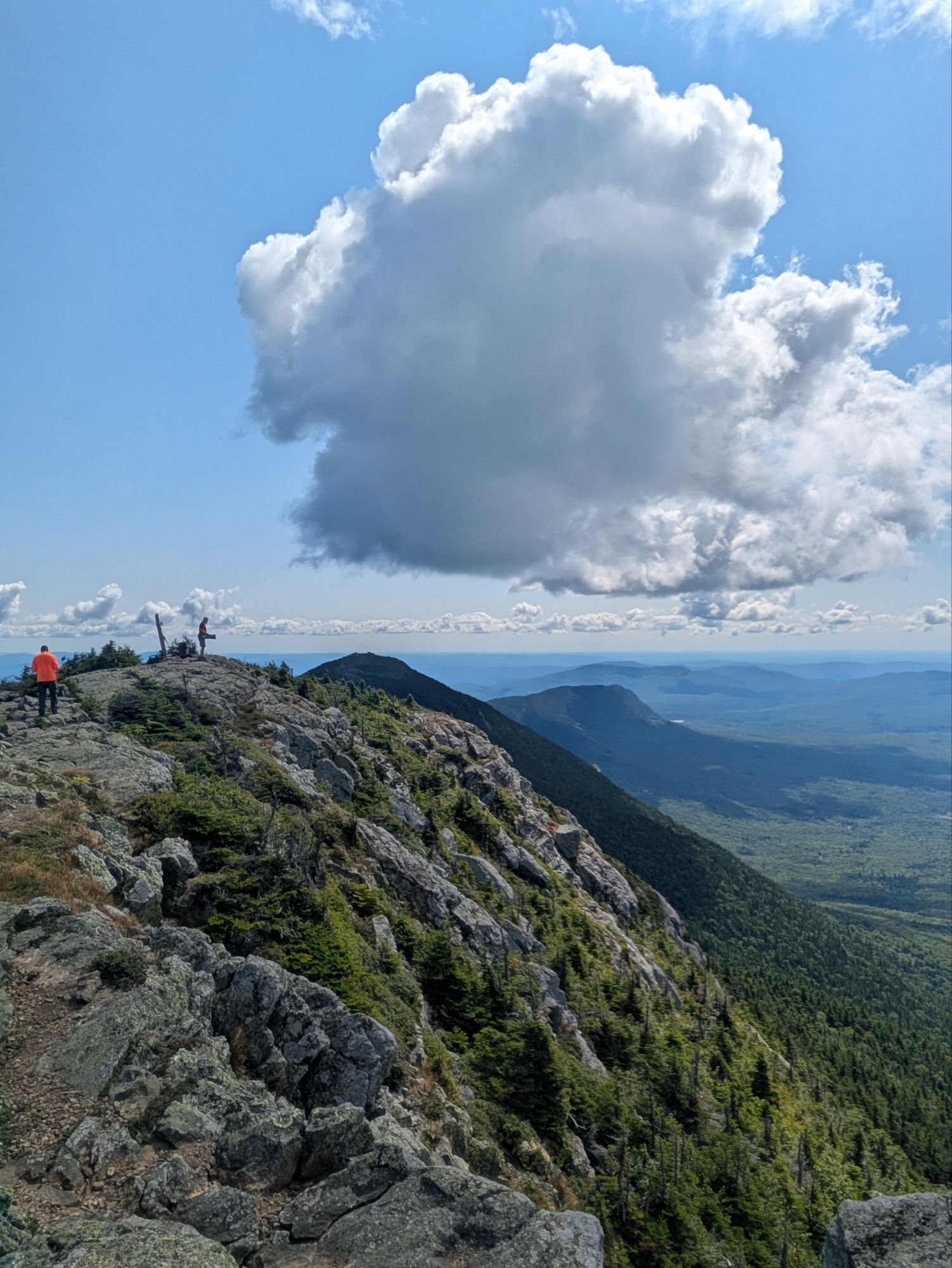Destinations & Things To Do
Hypoxic Hikers: Osprey Made a Backpack Just for You

While many outdoor brands pay lip service to inclusivity, it’s still difficult for many disabled hikers to find the gear they need. Osprey is trying to change that with the Talon Oxygen, a daypack specifically designed to assist people in carrying supplemental oxygen.
People with hypoxia, a condition where the body’s tissues don’t get adequate oxygen, often use supplemental oxygen as a treatment. For those with hypoxia who hike, backpack, or do other outdoor sports, using oxygen canisters while on the move poses a logistical and design challenge.
Osprey worked with Chantelle Shoaee, a disability advocate and the executive director of Always Choose Adventures, a nonprofit focused on outdoor accessibility, to design the Talon Oxygen and help more people get outside and enjoy nature.
What Is Hypoxia?
Hypoxia is a common condition that can result from a variety of medical diagnoses, including COPD, asthma, anemia, heart defects, pulmonary hypertension, and more. It can cause fatigue, dizziness, and shortness of breath.
Several studies have shown that hypoxia is associated not only with active COVID-19, but also long COVID. Osprey’s vice president of product, Mark Galbraith, cited the impact of COVID as a motivating factor for the brand to develop the Talon Oxygen.
A True Collaboration
Discovering a love for the outdoors later in life improved Shoaee’s mental and physical health, and helped her connect with her son. When medical conditions necessitated that she bring supplemental oxygen with her, Shoaee realized that the packs available on the market weren’t up to the task.
For those who need to carry supplemental oxygen, existing outdoor packs posed several issues. “Traditional methods, tangled tubing, awkwardly strapped canisters, were not only cumbersome, but also unsafe,” Shoaee wrote.
She estimated that carrying all the necessary medical equipment, plus basic hiking gear like a rain jacket, snacks, and water, would bring her average base weight to about 25-30 pounds. Bringing all of those along in a typical daypack led to neck and back strain and pain.
“Trying to wear that original pack, my neck hurt so bad. My god, my neck was miserable,” Shoaee said.
Shoaee decided to take action. Five years ago, she approached Osprey with an idea of making a specially designed bag, and the brand jumped on board.
“Through extensive collaboration — beta testing, refining designs, and working closely with Osprey’s product team — we created the Talon Oxygen,” Shoaee wrote. “Connecting with the Osprey Packs team — both locally in Cortez, Colorado, and across the world in Vietnam — I was amazed by how detailed, yet seamless they made the process.”
Technical Specs
The Talon is one of Osprey’s most popular daypacks, with a lightweight design, breathable back panel, and ample storage.
To modify the pack to carry supplemental oxygen, Osprey added a “ventilated pocket that can carry a portable oxygen concentrator like the Inogen G5, internal padded straps to secure single or dual O2 tanks size B and D, and routing ports for the tubes of the cannula,” Galbraith said.
Oxygen concentrators can overheat, so having a ventilated, breathable compartment to carry them is essential. The routing ports prevent the tubing for the cannula from getting caught or twisted, and interfering with oxygen delivery. The padded straps keep the heavy oxygen tanks centered in place, so they don’t shift or move around while hiking.
Osprey’s Talon is designed to carry heavy loads comfortably. There’s mesh-covered foam near the lumbar region for lower back support. Shoaee loves how the pack fits and supports the weight of the medical supplies. The fit of the bag is also highly adjustable, so users can fine-tune the bag to sit on their hips in just the right way for their bodies.
More Than Just a Hiking Pack
For people with hypoxia, the Talon Oxygen isn’t just a better way to bring along oxygen while hiking. It’s a potential game changer for all aspects of their lives, making it easier to do everything from mowing the lawn to grocery shopping to going to concerts.
“My friend Suzy did a whole day of garage sales, 8 to 10 hours. She’s never been able to do that on oxygen before,” Shoaee said.
“This project has become more than just a backpack to me. It’s a lifeline for all of us who struggle to breathe. It’s about freedom — the ability to step outside, explore, and truly live…This innovation sends a clear message to the outdoor industry: accessibility matters. Adaptive gear isn’t a niche: It’s a necessity.”
Destinations & Things To Do
PCT SOBO DAY 28 – A Sluggish Day

Day 28
Start: Stealth Site, mile 443.7
End: Tentsite, mile 470.5
Miles hiked: 21.6 miles, 26.8 trail miles
After our headache of a night last night, Sun and I slept in a bit and didn’t leave camp until around 7:30. The mosquitoes were a bit better this morning; they didn’t attack us with as much fervor as yesterday, even when we stopped for water at a lake.
The lake, Junction Lake, was such a serene place. Little baby ducks swam in groups across the water while the morning sun warmed the air. At one point, the mother duck came squawking in, flying this way and that way across the pond, throwing water in all directions. I’m not quite sure what the drama was about, something to do with the baby ducks, but eventually it was resolved since the squawking stopped.
This morning, Sun and I were moving pretty slowly. We were both tired from the night before. My pack felt unusually heavy and I missed the spring I had in my step on that first day out of town. A couple of miles later we reached Blue Lake, but it was a bit too early, cool, and windy for a swim. It was a beautiful spot though. The NOBOs we passed said it was an excellent swimming spot.
Sun and I climbed slowly up, taking a lot of breaks, almost one every 1.5-2 miles, which wasn’t really our style. I guess we had bitten off more than we could chew yesterday. We topped our climb of the morning and enjoyed the snippets of cell service and the warmth of the sun.
Then it was miles of downhill, passing a few NOBOs on the way. Our progress was further slowed by the huckleberries that lined the trail; I got a bit behind because they were so good!
We finally reached a parking lot with picnic tables and a pit toilet and decided it was the perfect place for lunch. Sun was hoping that we would find trail magic again, but no such luck despite all the cars that passed by on the gravel road. Lunch felt a bit more civilized this time since we had real tables to eat at instead of a bare patch of ground. Out big debate was whether to continue 12 miles on the trail to reach our goal campsite or take the 10.5 Panther Creek road walk alternate. If we walked the trail, we would have to climb with a long water carry and dry camp. But if we took the road, we could save a few miles and camp with water. We couldn’t decide what to do, so we decided to leave it for after our lunchtime rest.
Sun allocated 30 minutes for a nap while I relaxed in the shade. When nap time was up, our answer was clear: the road walk!
As we started down the road, we were immediately sidetracked by all of the big, juicy huckleberries that lined the road. We lost at least 30 minutes because there were so many to pick. We also found blackberries that tasted like candy. Yum!
As we walked, cars passed in either direction, but we still didn’t find the magic we had hoped for.
After a number of miles and a number of breaks, we reached Panther Creek Falls, one of the attractions of this alternate. A quick detour, they were worth the walk. Eventually, we were pooped and more than ready to be done with our long day. As we passed the Panther Creek Campsite, full of casual hikers and campers, the smell of hot hamburgers wafted over to us. If only we could have one!
After a few more minutes, we found our site and squeezed our tents in with a couple who were almost done with their section. After dinner, we had just enough time to get a few camp chores done before the daylight started to fade.
And that’s a day in the life of a PCT SOBO hiker!
This website contains affiliate links, which means The Trek may receive a percentage of any product or service you purchase using the links in the articles or advertisements. The buyer pays the same price as they would otherwise, and your purchase helps to support The Trek’s ongoing goal to serve you quality backpacking advice and information. Thanks for your support!
To learn more, please visit the About This Site page.
Destinations & Things To Do
Japanese travelers losing interest in Kyoto, top sightseeing spots slip behind Nara at peak season

Kyoto may be the historical heart of traditional Japanese culture, but current conditions are making it a less attractive placer for locals to visit.
Aside from maybe Tokyo, there’s no other city with more of a “must-visit” reputation than Kyoto for travelers to Japan, who flock to the country’s former capital to tour its historic temples, beautiful gardens, and otherwise get a glimpse of Japanese traditional culture. For a growing number of Japanese travelers vacationing in their home country, however, Kyoto is becoming a city they feel like they can leave off their itinerary.
Tokyo-based data/research organization Blogwatcher recently released the results of its analysis of travel patterns during Japan’s 2025 Golden Week holiday season, which straddled the end of April and beginning of May. Examining mobile phone location data, Blogwatcher determined that there were significant drop-offs in the number of Japanese visitors to five of Kyoto’s most famous sightseeing spots compared to just two years prior. Japanese visitors to Fushimi Inari Shrine plummeted by 40.4 percent compared to 2023, and both Kiyomizudera Temple and Kinkakuij/the Golden Pavillion’s numbers of Japanese visitors fell by roughly 25 percent. Shimogamo Shrine and Byodoiin Temple both had slight upticks in Japanese visitors in 2024, but reversed course in 2025 and had approximately 10 percent fewer domestic visitors than they’d had at Golden Week in 2023.
▼ Byodoin’s Phoenix Hall is so famous that it’s even depicted on the 10-yen coin.
It’s not hard to imagine what’s discouraging Japanese travelers from visiting Kyoto. The weak yen continues to make Japan more affordable for foreign travelers to visit than it’s been in a generation, and with so many of them including Kyoto in their Japan travel plans, the city’s attractions are crowded and its hotels expensive. The Kyoto Tourism Association’s data shows that through the first five months of this year, the average price per night for a stay in a Kyoto hotel is around 50 percent more than it was just two years ago. Those cost increases are relatively easy for inbound foreign visitors to soak up as they leverage the favorable exchange rate, but for Japanese travelers, who are already getting hit in the wallet by rapidly increasing consumer prices without equivalent wage increases, the idea of paying inflated prices to go someplace clogged with tourists is no doubt feeling like a less enjoyable way to spend their diminished disposable income.
However, as Kyoto is looking like a less attractive destination for Japanese travelers, they’re becoming more drawn to Nara. Blogwatcher tracks domestic visitor numbers for 33 of Kyoto Prefecture’s top temples, shrines, and historical tourism sites, and 37 in Nara Prefecture. During Golden Week in 2023, Japanese travelers showed an overwhelming preference for Kyoto, with its top sights receiving nearly 70 percent more Japanese visitors than Nara’s. In 2025, though, more Japanese travelers visited Nara’s major sights than Kyoto’s.
Japanese visitors to major temples, shrine, and historic sites during Golden Week
● Kyoto 2023: 746,000
● Nara 2023: 446,00● Kyoto 2025: 559,000
● Nara 2025: 561,00
It could be argued that Japan is still in the middle of the initial wave of its inbound tourism boom. Residual pent-up international travel demand and the weak yen are doing a lot to make the country a trendy and affordable choice for visitors from abroad, but it’s still not entirely clear whether their intense interest is going to be permanent. As a result, it’s likewise too early to say whether huge crowds and high prices have turned Japanese people off to the idea of traveling to Kyoto entirely, or if they’re simply putting their Kyoto plans on the back burner for the time being. After all, if the shrines and temples you’re going to see are already centuries old, holding back for a year or two to see if the tourism congestion has settled down doesn’t seem like all that long of a wait. For the time being, though, it really does look like Japan’s travelers aren’t nearly as excited about the idea of visiting Kyoto as they were just a short while ago.
Source: TBS Cross Dig with Bloomberg via Golden Times
Top image: Pakutaso
Insert image: Pakutaso
● Want to hear about SoraNews24’s latest articles as soon as they’re published? Follow us on Facebook and Twitter!
Destinations & Things To Do
The Bodacious Bigelow’s (ECT Day 201)

- Hiked Today: 21.1 miles
- Appalachian Trail (2,012 – 2,033.1)
- Total Hiked: 3,966.3 miles
- Total Paddled: 99.5 miles
Weather: 52 – 75°F, mostly sunny, some clouds
Elevation: 1,150 – 4,145 feet
Cranberry Stream Campsite to West Carry Pond Shelter
For some reason the charge on my power bank seemed to diminish quicker than normal over the past couple days. I still have a few days to go before my next stop, so today I went into extreme battery saving mode. I even went as far as turning my phone off whenever possible, but afterwards I wasn’t sure if that was helping or causing it to drain just as quick/even more quick.
Thus, you’d expect not as many photos for today, but I struggled to stop myself. It was an all-time wonderful day and that causes me to want to have the phone out documenting all the fun stuff.
Bodacious: “very large or important, or something people enjoy or admire.”
– from the Cambridge Dictionary (https://dictionary.cambridge.org/us/dictionary/english/bodacious)
Leaving camp, straight away I was hiking up. The end of the day yesterday was more downhill and flat-ish and set me up at the foot of the Bigelow’s. The climb was ok, definitely lots of trippy roots but not as steep as some other spots…
The photo above was taken right before popping out to a marvelous viewpoint. I got a kick out of the giant monolith type boulder and then was blown away when the view of Horn Pond and The Horns presented itself…
I thought the trail took me over both of the Horns, but just South. To get to North Horn it was a 0.2 mile side quest. I stuck to the white blazes and got some views looking back on the way up.
Atop South Horn there was another spectacular overlook and I sat down for second breakfast. Hikers Bookends and Ain’t Right joined too. The weather was once again premium and I soaked up the moment…
The next few miles were top-notch. Some of my favorite of the entire Appalachian Trail. It was down and then up to a ridge line topping the West Peak of Bigelow Mountain and then Bigelow Avery Peak. The massive Flagstaff Lake sat to the north and demanded my attention.
Sitting with the other hikers at this summit, I said something along the lines that this is more than a view, it’s a whole experience. What I was trying to get across was that it was 360 degrees, a whole scene, and as much as I try with photos and vids, being there in person is the only way to sense the grandeur. Sorry y’all. But alas, I did try to showcase the beauty nonetheless.
Before heading down into the trees again, I got a view of Little Bigelow Mountain where I’d be heading.
The rest of the day’s hike was less glamorous, but after Little Bigelow it was more cruisy. I came close to getting a good slow-motion vid of this giant Pileated Woodpecker, but pretty blurry…
Around 6:00 pm or so, I was internally thinking maybe I’d be able to push on further than my original goal. It never happens haha. Especially when I’m stopped for wonderful trail magic! Walking into a parking area, which later I’d find out was not even on the trail, I met Lebowski. He’s a 2021 (?) AT hiker that planned to set up the next day and chef tasty foods up for hikers. For me, he offered a beer, a chair, and some honey buns! It was nice resting and chatting with him.
Moving on from that, I was thinking I had about 6 miles of flat left to hike. The mileage estimate was accurate, but I underestimated the grade and there was not one, but two blips uphill I had to get over. Hence, I was exhausted and spent like normal by the time I reached camp at West Carry Pond Shelter.
I filled up with water straight from the lake. It was post-7:00 pm arriving here at West Carry Pond. Again with the ponds though… looks like a lake to me folks. Will the madness never end?
In my tired and hungry state, finding this glorious sight at the shelter was almost too much for me…
I mean, don’t they look like the most pristine and delicious chocolate chip cookies ever? I am a cookie monster and devoured several in quick succession.
I was the only one at the shelter and I still went for the tent. I set up and ate in record time. Going back to the cookies though… I didn’t feel right leaving them out for the bears to munch on. So, I ate them all! J.k., j.k. haha. I did eat a lot, but at least for the evening, I kept them safe by putting the whole Tupperware in my food hanging bag…
The loons sang me a lullaby as I drifted off to sleep. What a day! Another in the top 201 of the ECT I’d say 😎.
Thanks for joining on the journey! It means a lot that you took the time to read up on these adventures. If you want to help kids get access to the outdoors, a cause that means a lot to me, please help me in supporting Outdoors Empowerment Network! The “Tip Author” button is a direct link to my fundraising page. Y’all are truly amazing. Thank you!
This website contains affiliate links, which means The Trek may receive a percentage of any product or service you purchase using the links in the articles or advertisements. The buyer pays the same price as they would otherwise, and your purchase helps to support The Trek’s ongoing goal to serve you quality backpacking advice and information. Thanks for your support!
To learn more, please visit the About This Site page.
-

 Brand Stories2 weeks ago
Brand Stories2 weeks agoBloom Hotels: A Modern Vision of Hospitality Redefining Travel
-

 Brand Stories1 week ago
Brand Stories1 week agoCheQin.ai sets a new standard for hotel booking with its AI capabilities: empowering travellers to bargain, choose the best, and book with clarity.
-

 Destinations & Things To Do2 weeks ago
Destinations & Things To Do2 weeks agoUntouched Destinations: Stunning Hidden Gems You Must Visit
-

 Destinations & Things To Do1 week ago
Destinations & Things To Do1 week agoThis Hidden Beach in India Glows at Night-But Only in One Secret Season
-

 AI in Travel2 weeks ago
AI in Travel2 weeks agoAI Travel Revolution: Must-Have Guide to the Best Experience
-

 Brand Stories1 month ago
Brand Stories1 month agoVoice AI Startup ElevenLabs Plans to Add Hubs Around the World
-

 Brand Stories4 weeks ago
Brand Stories4 weeks agoHow Elon Musk’s rogue Grok chatbot became a cautionary AI tale
-

 Asia Travel Pulse1 month ago
Asia Travel Pulse1 month agoLooking For Adventure In Asia? Here Are 7 Epic Destinations You Need To Experience At Least Once – Zee News
-

 Brand Stories2 weeks ago
Brand Stories2 weeks agoContactless Hospitality: Why Remote Management Technology Is Key to Seamless Guest Experiences
-

 AI in Travel1 month ago
AI in Travel1 month ago‘Will AI take my job?’ A trip to a Beijing fortune-telling bar to see what lies ahead | China

You must be logged in to post a comment Login